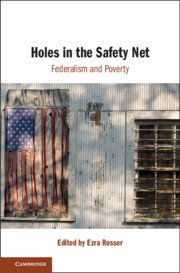New Article: Lauren Sudeall Lucas, Public Defense Litigation: An Overview, 51 Indiana Law Review 89 (2018), Georgia State University College of Law, Legal Studies Research Paper. Abstract below:
In Gideon v. Wainwright, the Supreme Court held that all criminal defendants facing serious criminal charges are entitled to the assistance of counsel, regardless of whether they can afford an attorney. In the years since Gideon, however, the provision of public defense to those who cannot afford counsel has fallen far short of the ideal expressed in Gideon that “every defendant stands equal before the law.” The failure of public defense systems to provide adequate representation to indigent defendants is often caused by severe underfunding and has resulted in the chronic appointment of “incompetent or inexperienced” counsel; delays in the appointment of counsel and discontinuity of attorney representation; a lack of training and oversight for counsel representing indigent defendants; excessive public defender caseloads and understaffing of public defender offices; inadequate or nonexistent expert and investigative resources for defense counsel; and a lack of meaningful attorney-client contact.
One response to these failings—as is often the case when constitutional violations are afoot—has been to challenge them in court. The focus of this short Article is on how the courts can address and have addressed the failings of underfunded and structurally flawed indigent defense systems. More specifically, it explores lawsuits that identify systemic failures—such as underfunding, excessive caseloads, and inadequate training and oversight—and seek system-wide remedies, capable of transforming the provision of defense services.
This Article is intended to provide a brief, high-level overview of public defense litigation in the United States. Part I provides an overview of the legal basis for such lawsuits and the obstacles they often encounter. Part II provides an aggregate depiction of how such litigation efforts have fared in state and federal court and highlights several examples, illustrative of some of the points made in Part I. Finally, Part III concludes by pointing to suggestions that have been made to increase the scope and effectiveness of such litigation and an alternative basis for future litigation efforts.





